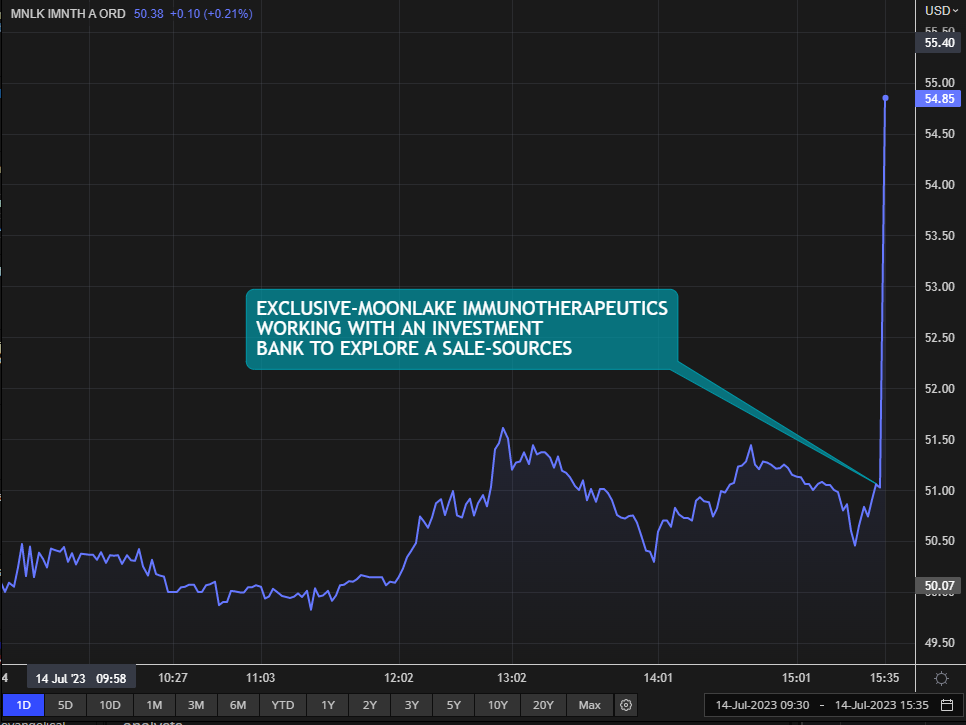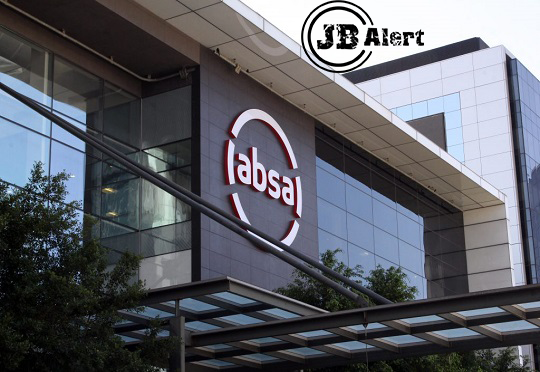Trading and investing performance - year six
Time for the annual review post, as my reviews follow the UK tax year which ended on the 5th April. And what a year it has been; well 10 months or so of fairly normal stuff, followed by several weeks of stomach churning market chaos. Previous updates can be found here, here, here, here and here. This post will follow the format of previous posts, but there will be some extra stuff related to the more recent market action in which I'll talk in some detail about what I did to handle this, and why. Overview of my world My investments fall into the following categories: In my investment accounts: 1 UK stocks 2 Various ETFs, covering stocks, bonds, gold and property 3 Usually some uninvested cash In my trading account: 4 Various ETFs, covering stocks and bonds 5 A futures contract hedge against those long only ETFs in 2.1, so that the net Beta is around zero 6 Futures contracts traded by my fully automated trading system 7 Cash needed for futures margin, and to cover potential trading losses (there is also some cash in my investment accounts, but it's pretty much a rounding error) Excluded from this analysis is: Net property equity - my house My 'cash float', roughly 6 months of household expenditure that is kept separately from my investment and trading accounts. For the purposes of benchmarking it makes most sense to lump my investments in the following way: A: UK single stocks Benchmarked against ISF, a cheap FTSE 100 ETF (FTSE 350 is probably a better benchmark but these ETFs tend to be more expensive). B: Long only investments: All ETFs (in both investment and trading accounts) and UK stocks Benchmarked against a cheap 60:40 fund. This is the type of top down asset allocation portfolio I deal with in my second book. C: Equity neutral: The ETFs in my trading account, plus the equity hedge. Benchmark is zero. D: Futures trading: Return from the futures contracts traded by my fully automated system. This is the type of portfolio I deal with in my first book, and in my third book. The denominator of performance here is the notional capital at risk in my account (usually close to, but not exactly the same as the account value). Benchmarks are a similar fund run by my ex employers AHL, and the SG CTA index, adjusted for volatility. E: Trading account value: This is essentially everything in my trading account, and consists of equity neutral + futures trading. No relevant benchmark. F: Everything: Long only investments, plus futures hedge, plus futures trading. I include the value of any cash included in my trading or investment accounts, since if I wasn't trading I could invest this. For the benchmark here again I use a cheap 60:40 fund. If you prefer maths, then the relationship to the first set of categories is: A = 1 B = 1 + 2 + 4 C = 4 + 5 D = 6 + 7 E = 4 + 5 + 6 + 7 = C + D F = 1 + 2 + 3 + 4 + 5 + 6 + 7 = B + 3 + 5 + D Performance contribution The figures shown are the contribution of each category to my total investment performance: A, or 1) UK equities -3.9% 2) ETFs -11.6% B) Long only investments -15.5% C) Equity hedge +2.3% D) Systematic futures trading +7.0% E) Trading account: +6.4% F) Total -6.2% Here are the same figures as 'internal rates of return' - the Excel function XIRR (so you can't add these up, but they are comparable and account for flows between categories): A) UK equities -23.1% Benchmark -24.3% B) Long only investments -17.5% Benchmark -10.5% D) Systematic futures trading +39.7% Benchmarks 8.0% and 23.4% F) Total -6.6% Benchmarks -10.5% This gives you a good of where the value has been added, so let's dive in to the details. UK Equities This is portfolio uses a mechanical system described here plus enforced sector diversification. Crucially there is a 30% stop loss in place on all these positions. At the start of the year the picture looked like this: ICP 20.98% (Inter Capital Group) VSVS 10.79% (Vesivius) BKG 10.59% (Berkley Group) CEY 8.91% (Centamin) STOB 8.76% (Stobart) GOOG 8.69% (Go ahead) PTEC 8.66% (Playtech) LGEN 8.47% (Legal and General) HSBA 7.21% (HSBC) BP 6.94% (BP) At the end of the year, it looks like this HMSO 100% Hammerson What has happened here, I hear you cry? Well after doing some more research (OK I read Andreas' book) I decided to make a further tweak to my system, where I wouldn't replace stocks that had hit their stop loss if there was clear downward momentum at the index level. And indeed, that is exactly what happened. Just for fun I decided to calculate the effect of this extra tweak, and it actually ended up losing money, but not very much (~2.5% of the starting portfolio value). The index is now trending upwards, so I am rebuilding this portfolio. More on this later. Not shown above, but held at various times of the year were Hays HAYS, Kingfisher KGF, Elementis ELM, and Man Group EMG (my former employers). Almost all my positions showed a total return loss during the year, ranging
Previous updates can be found here, here, here, here and here.
This post will follow the format of previous posts, but there will be some extra stuff related to the more recent market action in which I'll talk in some detail about what I did to handle this, and why.
Overview of my world
My investments fall into the following categories:
- In my investment accounts:
- 1 UK stocks
- 2 Various ETFs, covering stocks, bonds, gold and property
- 3 Usually some uninvested cash
- In my trading account:
- 4 Various ETFs, covering stocks and bonds
- 5 A futures contract hedge against those long only ETFs in 2.1, so that the net Beta is around zero
- 6 Futures contracts traded by my fully automated trading system
- 7 Cash needed for futures margin, and to cover potential trading losses (there is also some cash in my investment accounts, but it's pretty much a rounding error)
Excluded from this analysis is:
- Net property equity - my house
- My 'cash float', roughly 6 months of household expenditure that is kept separately from my investment and trading accounts.
For the purposes of benchmarking it makes most sense to lump my investments in the following way:
- A: UK single stocks
- Benchmarked against ISF, a cheap FTSE 100 ETF (FTSE 350 is probably a better benchmark but these ETFs tend to be more expensive).
- B: Long only investments: All ETFs (in both investment and trading accounts) and UK stocks
- Benchmarked against a cheap 60:40 fund. This is the type of top down asset allocation portfolio I deal with in my second book.
- C: Equity neutral: The ETFs in my trading account, plus the equity hedge.
- Benchmark is zero.
- D: Futures trading: Return from the futures contracts traded by my fully automated system. This is the type of portfolio I deal with in my first book, and in my third book. The denominator of performance here is the notional capital at risk in my account (usually close to, but not exactly the same as the account value).
- Benchmarks are a similar fund run by my ex employers AHL, and the SG CTA index, adjusted for volatility.
- E: Trading account value: This is essentially everything in my trading account, and consists of equity neutral + futures trading.
- No relevant benchmark.
- F: Everything: Long only investments, plus futures hedge, plus futures trading. I include the value of any cash included in my trading or investment accounts, since if I wasn't trading I could invest this.
- For the benchmark here again I use a cheap 60:40 fund.
If you prefer maths, then the relationship to the first set of categories is:
A = 1
B = 1 + 2 + 4
C = 4 + 5
D = 6 + 7
E = 4 + 5 + 6 + 7 = C + D
F = 1 + 2 + 3 + 4 + 5 + 6 + 7 = B + 3 + 5 + D
Performance contribution
The figures shown are the contribution of each category to my total investment performance:
A, or 1) UK equities -3.9%
2) ETFs -11.6%
B) Long only investments -15.5%
C) Equity hedge +2.3%
D) Systematic futures trading +7.0%
E) Trading account: +6.4%
F) Total -6.2%
Here are the same figures as 'internal rates of return' - the Excel function XIRR (so you can't add these up, but they are comparable and account for flows between categories):
A) UK equities -23.1% Benchmark -24.3%
B) Long only investments -17.5% Benchmark -10.5%
D) Systematic futures trading +39.7% Benchmarks 8.0% and 23.4%
F) Total -6.6% Benchmarks -10.5%
This gives you a good of where the value has been added, so let's dive in to the details.
UK Equities
At the start of the year the picture looked like this:
ICP 20.98% (Inter Capital Group)
VSVS 10.79% (Vesivius)
BKG 10.59% (Berkley Group)
CEY 8.91% (Centamin)
STOB 8.76% (Stobart)
GOOG 8.69% (Go ahead)
PTEC 8.66% (Playtech)
LGEN 8.47% (Legal and General)
HSBA 7.21% (HSBC)
BP 6.94% (BP)
At the end of the year, it looks like this
HMSO 100% Hammerson
What has happened here, I hear you cry? Well after doing some more research (OK I read Andreas' book) I decided to make a further tweak to my system, where I wouldn't replace stocks that had hit their stop loss if there was clear downward momentum at the index level. And indeed, that is exactly what happened.
Just for fun I decided to calculate the effect of this extra tweak, and it actually ended up losing money, but not very much (~2.5% of the starting portfolio value). The index is now trending upwards, so I am rebuilding this portfolio. More on this later.
Not shown above, but held at various times of the year were Hays HAYS, Kingfisher KGF, Elementis ELM, and Man Group EMG (my former employers).
Almost all my positions showed a total return loss during the year, ranging from -68% for Stobart (though I have been selling this position gradually for a few years, and am way ahead) to BKG and ICP which were basically flat (-1% and +1% respectively).
The bottom line for this subportfolio was an XIRR of -23.1% vs a benchmark (FTSE 100 ETF) of -24.3%. A small beat, but on a slightly longer view my UK stockpicking performance has been pretty respectable:
2016 - 2017 XIRR 29.2%, benchmark 22.7%
2017 - 2018 XIRR 18.3%, benchmark 2.2%
2018 - 2019 XIRR -2.3%, benchmark 7.6%
2019 - 2020 XIRR -23.1%, benchmark -24.3%
Divis made up about 4.6% of the XIRR, not a surprise given my filter likes buying high yielders with sustainable dividends.
ETFs and funds
All my non UK and non equity exposure is in ETFs, with a smattering of investment trusts. As usual trading was done for tax optimisation, to generate funds for SIPP and ISA Investment, and to get the right risk exposure (discussed later). Normally this doesn't involve much trading, but I did a lot this year. See the later section on COVID-19.
I don't look at the performance of my ETF portfolio seperately, only in conjuction with UK shares.
Long only
The news here isn't great. Adding up the performance of both my stocks and ETFs, I get to an XIRR of -17.5% versus a benchmark of -10.5% (a Vanguard lifestyle fund where the bond:equity allocation is chosen to be as close as possible to my overall strategic risk allocation). That is pretty unpleasant, and there are a few reasons for it.
Firstly, I have a relatively high equity allocation in my long only portfolio, which is a bit lower once I take into account my equity short and the risk allocated to my futures trading. I should probably use a seperate benchmark for my long only portfolio, versus my entire portfolio, but life is too short. Adding on my equity short hedge performance would bring my XIRR up to 15% (and would of course make my performance in earlier years mostly worse).
Secondly, my equity allocation was higher than my strategic allocation before the crisis hit, due to favourable trends (the signal I use to adjust my equity allocation). Finally, my bond allocation at the start of the year was overweight in riskier bonds (EM and higher yielding corporates). Basically I was a 'yield hunter' unwilling to buy safe low yielding developed country government bonds, but of course in a crisis riskier bonds behave more like equities.
As an interesting footnote my systematic futures portfolio was quite happy to buy low yielding government bond futures, as these still had 'positive carry' despite their low yields.
Here's the (rather mixed) track record for my long only portfolio:
2016 - 2017 XIRR 22.3%, benchmark 17.7%
2017 - 2018 XIRR 1.3%, benchmark 1.3%
2018 - 2019 XIRR 4.0%, benchmark 7.2%
2019 - 2020 XIRR -17.5%, benchmark -10.5%
Systematic futures trading and equity hedge
The systematic futures trading system I run is effectively what you can in find in "Systematic Trading", and code-wise is an older version of the implementation in pysystemtrade.
For my trading account as a whole the breakdown looks like this (all numbers are as a % of the notional maximum capital at risk, which happens to be a bit less than the trading account value):
Hedging futures: +12.9%
Hedged stocks, total return: -16.9%
Net equity neutral: -4.0%
Futures trading:
MTM: 36.8%
Interest: 0.07%
Fees: -0.04%
Commissions: -0.73%
FX gain/loss: +3.6%
Net futures trading: +39.7%
Grand total: +35.7%
Some more statistics (futures trades only):
Profit factor: 1.69
Win/loss ratio: 1.85
Hit rate: 47.7%
Avg holding period, winners: 46 days
Avg holding period, losers: 23 days
'Bench1' is an GBP denominated AHL fund, using monthly returns from April to March in each year, and a new benchmark 'Bench2' is the SG CTA index, with matching daily returns. Both have returns scaled up to match my volatility (I have redone this calculation so the benchmark may look different for previous years).
Remember the benchmark should only be compared against futures trading, not the equity neutral component of the portfolio.
Year: 14/15 15/16 16/17 17/18 18/19 19/20
Total: 57.2% 39.6% 0.3% 0.4% 6.1% 35.7%
Hedge: -1.1% 16.3% 14.4% 4.1% 1.0% -4.0%
Futures: 58.2% 23.2% -14.0% -3.7% 5.2% 39.7%
Bench1: 65.8% - 9.4% -5.3% 9.7% 5.9% 23.4%
Bench2: -6.7%* -21.9% -3.8% 0.7% 8.0%
* From 13th April 2015
I'm pretty pleased with that. I've beaten the index every single year, but this year I've also managed to beat my old mates at 'bench1'.
Total investment return
My total return on all my investments, including cash held for futures margin, came in at an XIRR of -6.6%. Once again Vanguard 60:40 seems an appropriate benchmark (since if I wasn't trading futures I could throw all my cash into that fund), at -10.5%. I have been saved by my futures trading, which really did come through as a diversifier.
However this is misleading, since my futures trading was actually flat in the COVID period (say from late February to early April), having made all of it's money up the end of January. So the correlation wouldn't be significantly negative once you look through to monthly performance.
Let's look at some history
2016 - 2017 XIRR 18.2%, benchmark 19.3%
2017 - 2018 XIRR 0.6%, benchmark 1.3%
2018 - 2019 XIRR 4.4%, benchmark 7.2%
2019 - 2020 XIRR -6.6%, benchmark -10.5%
Spookily the geometric return of these two series is almost identical: 3.7685% for me and 3.7688% for the benchmark.
Still a fun exercise is to compare this to the likely performance I would have had with a 100% UK equity portfolio, which is what I held in 2008 and which I guess is still pretty common. A FTSE 100 tracker would have lost 24.3, and I lost 6.6%. Where does the outperformance come from?
- A FTSE 100 tracker would have lost 24.3%
- My UK stockpicking 'skills' bought that down to 23.1%
- A geographically diversified equity ETF lwould have lost about 16%
- Adding global bonds to the mix gets you to -10.5%
- My lack of skill in global asset allocation knocked me down to -17.5%
- My equity hedge reduced that loss to -15%
- Allocating to an industry average CTA fund would have reduced the loss to about -12%
- My 'skill' in futures trading reduced the loss further to -6.6%
Or to put it in order of importance:
- Geographic diversification across stocks added ~8%
- Diversification across asset classes added ~4% (with bonds) or ~7% (with a CTA allocation)
- 'Skill' and hedges added around 3%
Diversification really is the thing to do! OK, it's not easy for everyone to run a mini CTA from home. But everyone can buy a diversified ETF portfolio.
Risk
My risk allocation has been a moving feast this year! Here it is as of April 5th, and I will discuss the changes and future direction in the next COVID-19 specific part of the post.Cash allocation
|Asset |Start of year|Current|
--------------------------------
|Bonds | 22.7% | 28.8% |
|Equity | 65.1% | 45.8% |
|Other | 2.7% | 0.2% |
|Cash | 9.5% | 25.2% |
"Cash" excludes money held in bank accounts which will cover ~6 months of living expenses that I do not deem part of my investment portfolio.
Risk allocation
|Asset |Strategic|Start of year|Current|
-------------------------------------------
|Bonds | 22% | 12.0% | 17.4% |
|Equity | 50% | 60.7% | 50.2% |
|Futures | 25% | 24.7% | 32.2% |
|Other | 3% | 2.5% | 0.3% |
Yes, I have a lot of cash. This is also why my futures risk has gone up as a percentage; I have a smaller proportion of my investment portfolio in non-cash at-risk assets, but my futures risk in money terms is almost identical to last year. In real terms I've essentially de-risked the long only part of my portfolio, with a re-allocation from equities to bonds.
More on this subject in a moment.
Regional exposures (rows add up to 100%)
| | Asia | EM | Euro | UK | US |
---------------------------------------------
|Bonds | 0% | 19% | 14% | 17% | 49% |
|Equity| 17% | 32% | 8% | 23% | 19% |
The global pandemic sized elephant in the room
This would normally be the end of the post, with some trite quote from Charles Dickens or Peter Mandelson. However this has not been a normal year, and the next couple of years probably won't be eithier.
It certainly seemed reasonably normal when in mid February I went on a skiing trip in Northern Italy. There were guys at the airport testing temperatures when we arrived in Milan, but nothing when we returned to the UK a week later. Some of my Chinese students came in wearing face masks, but then this hadn't been uncommon during the SARs epidemic (which killed ~800 people globally, or roughly the number that are dying every single day just in the UK from COVID19). Since then the world has completely changed, at least temporarily, and from a hard nosed economic point of view global markets have fallen by about a third, and have since rallied so they are now down 'only' 20%.
So what I have done about it? My futures trading is fully systematic, and as I've already alluded to it didn't do very much. Having made a lot of money in 2019, and then another 9.7% in January, it was flat in February, March, and (so far) April.
My UK stock portfolio has also been discussed; my stocks started hitting stops on February 27th and were not replaced in accordance with my tweaked trading rule. The earlier the stops were hit the better those trades look; all the trades I did before 7th March are in the black. Those done afterwards are mostly in the red since the stocks have since rebounded, and as I've already said this resulted in a small loss net-net amounting to about 0.4% of my total net worth.
That left me with the job of trying to manage my overall risk allocation by trading ETFs, something I do entirely manually although I am guided by the same principles that I use elsewhere. In particular I allocate to asset classes based on trends and risks; an asset class in a downtrend needs to be reduced, as does an asset class whose risk has increased. It is obvious then that I was overweight equities. The market had helped here, by reducing the value of the equities versus bonds in my portfolio (thanks market!). Still I decided I needed to do more.
On February 28th I sold US and European equity ETFs amounting to 4.5% of my investment portfolio and bought US treasury bonds. For this crisis portfolio my bond allocation was not going to be in 'dash for trash' high yielding government bonds; I needed the real diversification of gilt edged securities. The equities I was selling was with one eye on optimising capital gains tax, and with the other eye on keeping a reasonable geographic diversification.
A couple of weeks later on the 13th March I recycled some of the proceeds from selling UK shares into US treasury bill ETFs, a value amounting to about 6.6% of my portfolio. My concern here was something else; I didn't want to exceed the deposit insurance limits which I was well over in several brokerage accounts. US treasury bills are 'cash like' but do not count towards these limits.
With the same thing in mind I opened a government backed NS&I account to look after another chunk of cash. At this stage things looked pretty grim; I even took several hundred quid out of the bank in paper money in case the ATMs stopped working (a real fear in 2008). Ironically no shop will take paper money now, and instead it's sitting in an envelope inside our household safe.
Between the 16th March and 19th March I sold more equity ETFs, amounting to about 15% of my total investment portfolio, and again recycled these into a mixture of US government bonds and treasuries.
On the 20th March I called the bottom https://twitter.com/investingidiocy/status/1240650064923709440
... And I started to gradually shift my exposure back towards equities https://twitter.com/investingidiocy/status/1241009290246270976
But I'm a conservative systematic trader, so I didn't go 'all in', sadly as it looks like I was very close to spot on (just one trading day early). Total purchases of equity on the day were a relatively modest 4% of my portfolio value. The other thing I didn't want to do is buy individual equities just yet, until there was at least some updating of analyst forecasts to reflect the new normal, even if those updates are still sticking wet fingers into the air.
So instead I bought the quasi-tracker IUKD ETF as a placeholder for my UK stock exposure (which as a happy by product of this crisis, I was going to be able to consolidate in a single tax-sheltered brokerage account), as well as European equity ETFs which were on particularly attractive yields.
I continued to buy through the 25th, 26th and 27th March, first using cash and then rotating out of US government bond and T-bill holdings. Total purchases amounted to some 21% of my portfolio value.
With the crisis situation I decided to start monitoring my risk in real time and occasionally posted it on twitter. This gives a numerical picture of the story above:
| | April 2019 | 12th March| 17th March| 20th March| 5th April |
=======================================================================
|Bonds | 23% | 26% | 53% | 54% | 29% |
|Equity| 65% | 44% | 26% | 27% | 46% |
|Cash | 12% | 30% | 21% | 19% | 25% |
Overall all my trading activity since 27th February has made ... well enough that my XIRR would have been -8.1% rather than -6.6% (and that includes a small loss from UK equity trading). But it has been a lot of trading. I turned over more than 100% of my portfolio in just over a month. And the figures updated to today probably aren't as good, as the market has continued to rebound.
What next?
Now at least some of the dust has settled, it's worth having a long hard look at where my portfolio currently stands and to judge if it's correct, and what my plan will be for the current tax year. It's very easy to make a bullish or a bearish case for the stock market right now, and I won't bore you with these as I am sure you have heard it all.
If there are bargains to be found, it's probably mostly amongst individual stocks; large sell offs producing large dispersions variations in price, not all of which are justified. Here I limit myself to holding stocks in the UK to avoid any hassles with tax, and because of the availability of filters that suit my choice of metrics. My UK equity portfolio is just 11% of my total portfolio, compared to 18% a year ago, and almost all of that is in ETFs so there is plenty of space here.
So after month end, once some data was available, I decided to start rebuilding my UK equity portfolio. Only the first of these purchases, Hammerson, is included in the year end figures above. It dropped by a quarter in value the day after I bought it, but now shows a modest profit.
Now a large number of stocks are passing my filter, but I am wary of going 'all in' and trying to bottom fish whilst risk levels are still elevated and trends are showing a mixed picture (decidedly up in the short term, still down in the long term).
My rule about sector diversification is more important than ever here; a huge number of housebuilders look great value, but they are probably more exposed than average to the bear case and so you would not want to exclusively own this sector.I decided to invest a proportion of my target portfolio every week in the stock that shows the best value, initially limiting myself to one stock per sector, with an eye to eventually holding about 20 - 25 stocks. I will miss out on some bargains by averaging in like this, but will hopefully pick up a some stocks that are currently overvalued, and will obviously benefit if the current rally turns out to be a false dawn.
At the moment I am using cash for this, but at some point I will sell the 'placeholder' IUKD ETFs and also do a modest reallocation from bonds. It will take about 6 months to fully re-invest this sub-portfolio.
Outside of the UK, my first thoughts involve investing at least some of my remaining unproductive cash. Some of my year end cash was earmarked for ISA funding and has now been transferred.
A chunk of my cash sits in my futures trading account and is required for margin payments. One positive side effect of the crash is that I've reduced the size of my equity holdings in this account (and the hedge against them); something I couldn't do before without incurring CGT. The account is now a 'purer' futures account, with very little p&l coming from the equity + hedge component.
This does mean there is more cash in this account than before, although this doesn't reduce my overall risk. Some of this is now invested in 'cash like' treasury bill ETFs (which is what most CTAs do with excess cash), but I am limited to how much I can do of this since the broker currently limits the ability to borrow against these if I need more futures margin. I will have to be more proactive about managing this, if I have larger futures positions I may need to sell down the ETF holding and vice versa. For now my positions are quite small and I can put quite a bit more into 'cash like' ETFs.
The rest of this investment will be directed into equity ETFs, with a close eye on diversification. In particular, I'm pretty seriously underweight European equity so it's likely that will be amongst my first investments.
After all that activity it's likely my risk allocation will look something like this:
Cash allocation
|Asset |Start of year|Current| Target |
=========================================
|Bonds | 22.7% | 28.8% | 33.7% |
|Equity | 65.1% | 45.8% | 57.6% |
|Other | 2.7% | 0.2% | 0.2% |
|Cash | 9.5% | 25.2% | 8.5% |
Risk allocation
|Asset |Strategic|Start of year|Current| Target |
====================================================
|Bonds | 22% | 12.0% | 17.4% | 17.5% |
|Equity | 50% | 60.7% | 50.2% | 54.4% |
|Futures | 25% | 24.7% | 32.2% | 28.1% |
|Other | 3% | 2.5% | 0.3% | 0.2% |
This does not seem a particularly bad allocation considering the huge amount of uncertainty that is still around at the moment. I can see myself increasing my equity allocation further if the positive trend continues.
Summary
It has been an interesting year and a pretty rocky few weeks, but I'm pleased with how I've navigated it. As someone who lives off their investments, capital preservation is more important than making big swings with the bat and knocking the ball out of the ground. I don't know what is going to happen next, and I don't profess to, and my portfolio reflects that.
What's Your Reaction?













.png)


























